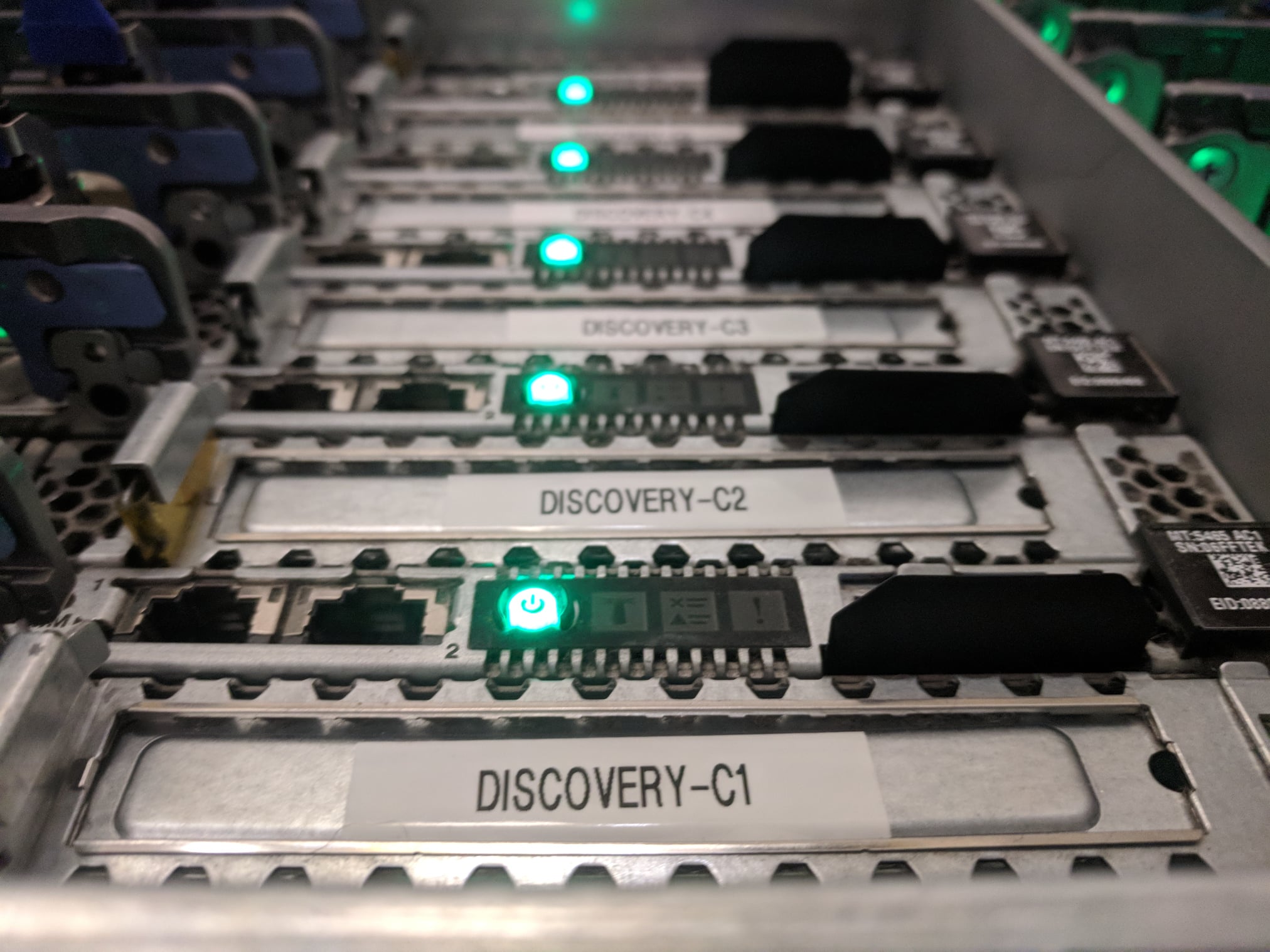NMSU improves advanced supercomputing for students, researchers statewide


New hardware installed earlier this year at New Mexico State University as part of a National Science Foundation grant is the next step in providing high-performance computing to faculty and students across the state.
High-performance computers (HPCs) can crunch numbers for complex problems – like those in artificial intelligence, genetics, economics or ecology – and skills with them are highly sought-after. An HPC can be considered a superpowered computer that people are able to share time on. The system and its users are supported by NMSU’s HPC Team: a group of graduate students, HPC administrators and Diana V. Dugas, principal investigator of the grant and NMSU’s director of instruction and research support – who collaborate to support the system and its users.
“I’m talking with professors in chemistry and biochemistry and big data in computer science around New Mexico,” Dugas said. “Faculty can even use the HPC for a single assignment for their students. If they’re willing to write an assignment using the HPC, we want them to use it. Students will have their head explode by seeing what’s possible.”
Joel Sharbrough, assistant professor of biology at New Mexico Tech, teaches bioinformatics. He designed his entire course this year around the HPC. His course is for juniors, seniors and graduate students.
“Anybody doing bioinformatics these days, it’s all done in the cloud or on high-performance computers,” Sharbrough said. “Because of the genomics revolution, these data sets are so massive, no regular computer can handle them. I want to change the model of bioinformatics instruction and get directly into the HPC environment because this is what the bioinformatics field is like and this is how you do it.”
Over the past year, through the CC*Compute grant, NMSU has offered HPC in an easily accessible format to students, even in rural areas, using a personal computer. Currently, NMSU’s HPC cluster is free to use for students and faculty for research and teaching for anyone on the NMSU main campus and for faculty around the state of New Mexico who want to incorporate the system into their classes. It can also be accessed remotely with a modest computer and internet connection.
Sharbrough divided his class into two sections. The first part teaches students when and why to apply tools used in bioinformatics. The second part is when his students dive into the deep end of big datasets that would take a lifetime to analyze without high-performance computing.
“They built on such a user-friendly interface. Transferring files is a walk in the park so it’s easy to work with,” Sharbrough said. “We all got into the HPC and started navigating the system, how to run programs to do biological analyses, building on it week after week. At first, I was hand-holding, but by the end the students were going through the pipelines by themselves.”
The weeks of analyses by the students in Sharbrough’s class turned up some discoveries about Neanderthal genomics that he plans to get published. He said to get a job in the biology industry, government or in academia typically requires at least a master’s degree or a Ph.D. All require serious computation work.
“Technology in biology is outpacing Moore’s Law 20-years running,” Sharbrough said. “It’s the fastest growing industry there is. The genomics revolution is a game changer. With this training, students can go into graduate labs and hit the ground running. They can augment a thesis with the bioinformatics component.”
Dugas would like to see students taking their HPC experience out of the classroom and back into their labs. Although CC*Compute can’t support all of the research within the state, the HPC team will share other free regional/national resources available to researchers to test their ideas and add support to their grant proposals.
“I really want people to think beyond what they normally do inside a classroom,” Dugas said. “It will allow your students to see what’s really possible.”
Those interested in using the NMSU HPC for a class or research, or for further information on the other free resources available regionally and nationally, contact hpc-team@nmsu.edu.
